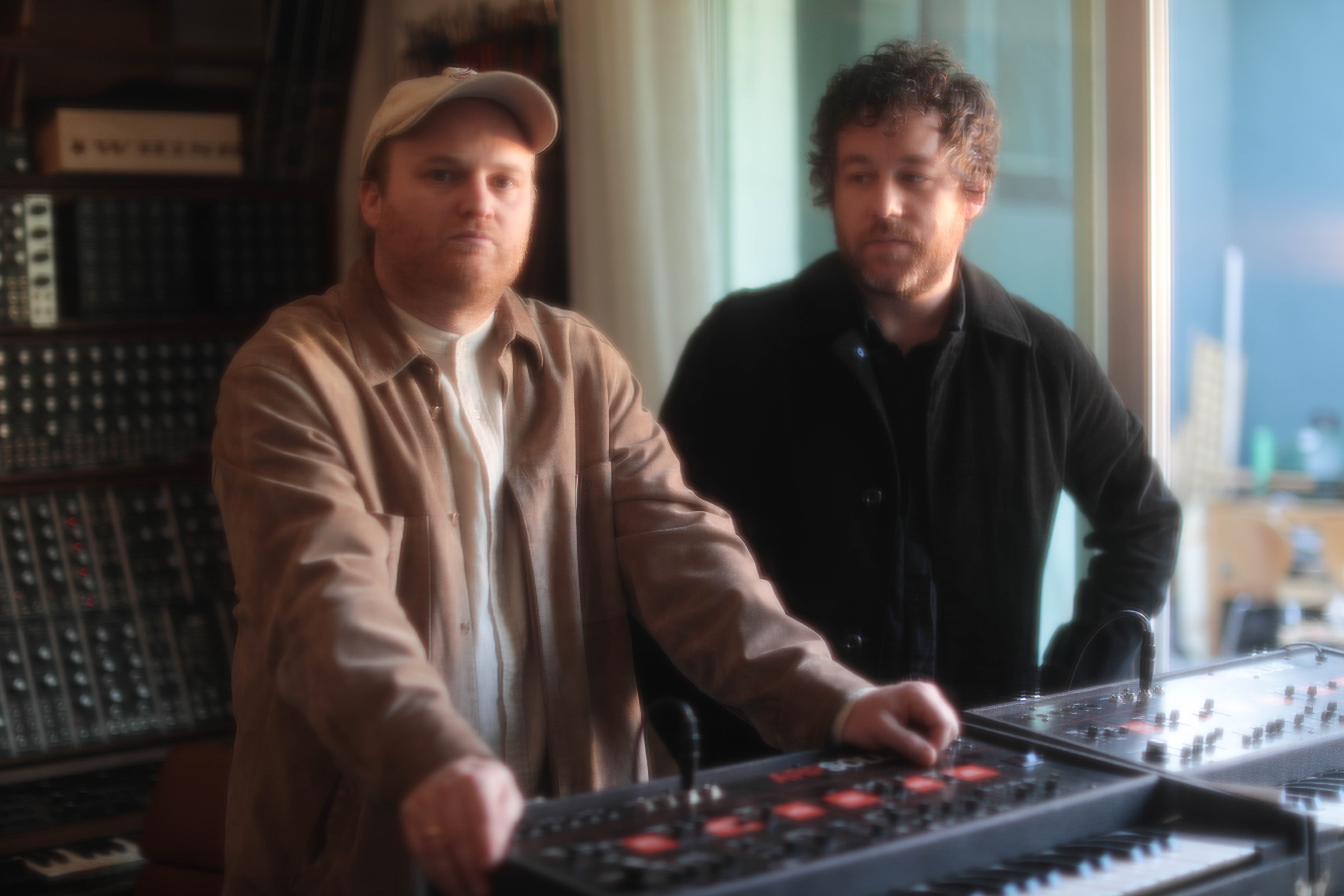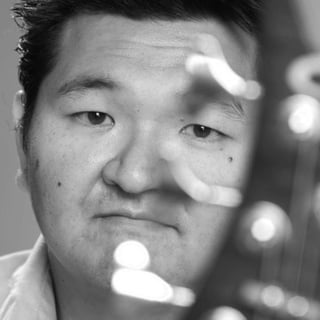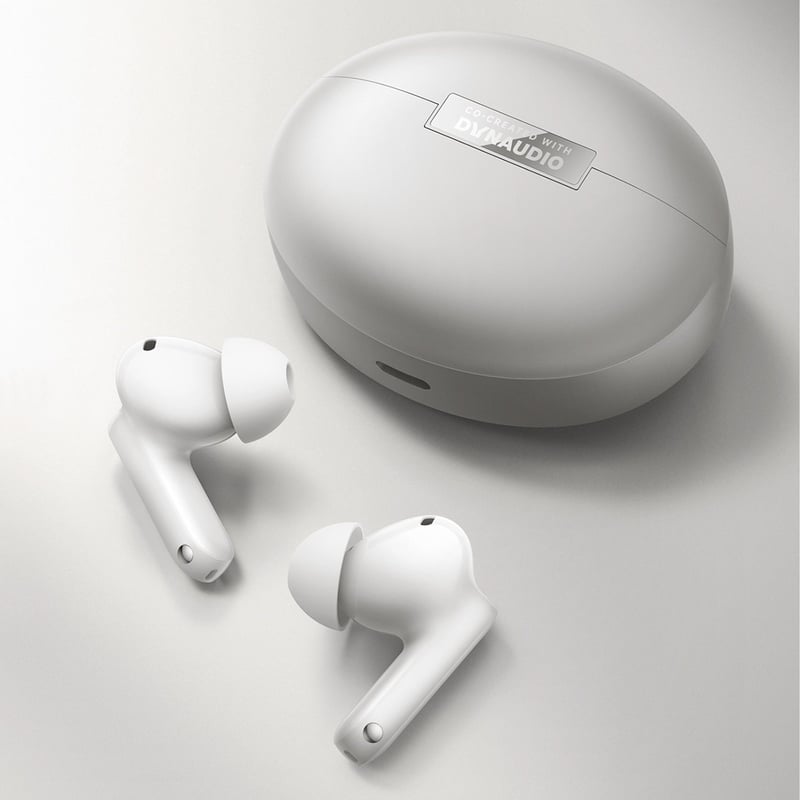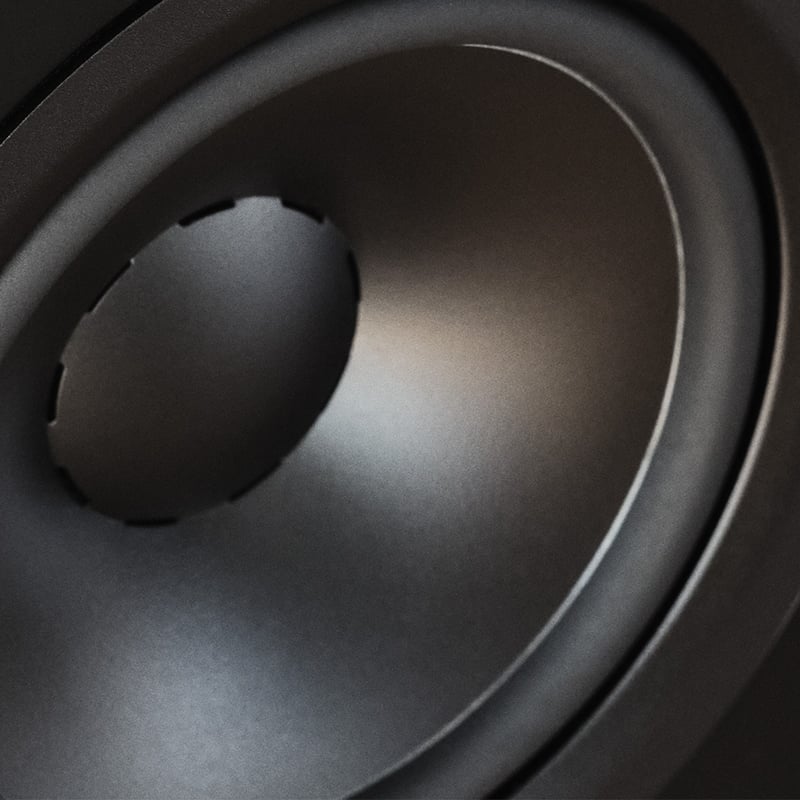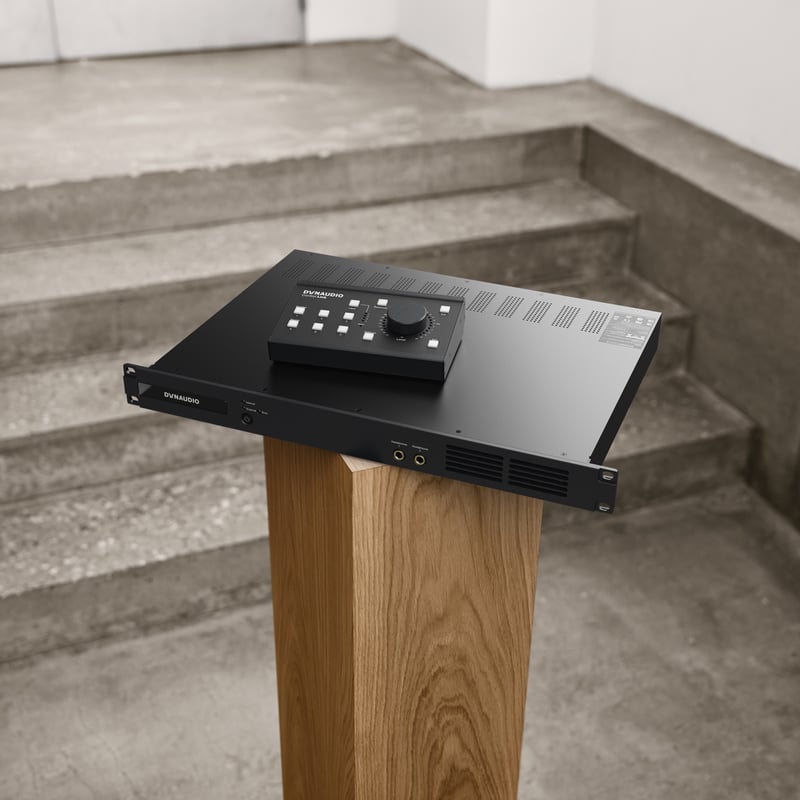The soundtrack for the Netflix smash-hit Stranger Things couldn’t be mistaken for anything else – not least thanks to its use of classic synthesisers, which composer duo Kyle Dixon and Michael Stein tracked on LYD monitors during the first three seasons and currently on Core speakers for the upcoming fourth season.
Analogue synths are without doubt the central component around which Michael and Kyle’s music revolves – whether it’s for film and TV productions or for their own releases. We hooked up with them for a chat about making music, working in the studio and how to make it in the film-scoring business.
In 2020, remote working has become the ‘new normal’ for many of us, but Kyle and Michael have been collaborating from a distance for years. Although Kyle is based in Austin, Texas, and Michael in Los Angeles, their studio setups are fairly similar to make it easier to exchange project files and work together. Let’s take a closer look at their gear…
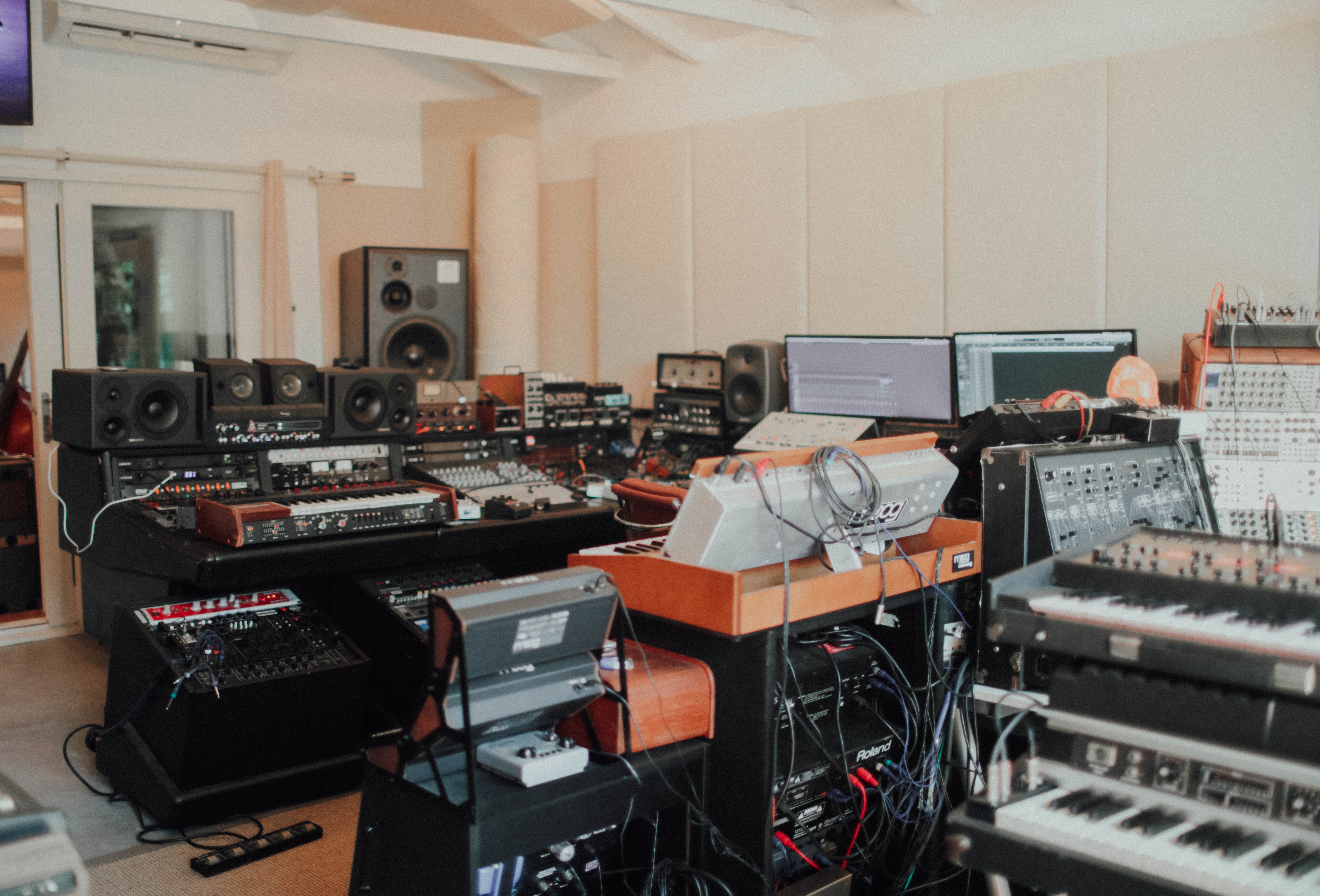
Behind the music
Michael and Kyle both have their studios installed in their homes, but to call them ‘home studios’ is to do them a real disservice; they’re both bristling with classic analogue synths, drum machines and keyboards. Surprisingly, though, the signal chain probably isn’t entirely different from what you would find in many (well-equipped) home studios.
Since those synths are such a key element to the duo’s sound, the audio interfaces for getting those sweet analogue flavours into ‘the box’ are of course central pieces of kit. And in this department, both Michael and Kyle have Universal Audio Apollo 16 installed – in fact, they have two each. Another ‘shared component’ is the DAW (Digital Audio Workstation). They both use Apple’s Logic Pro, which obviously also makes it much easier to share project files between Austin and LA.
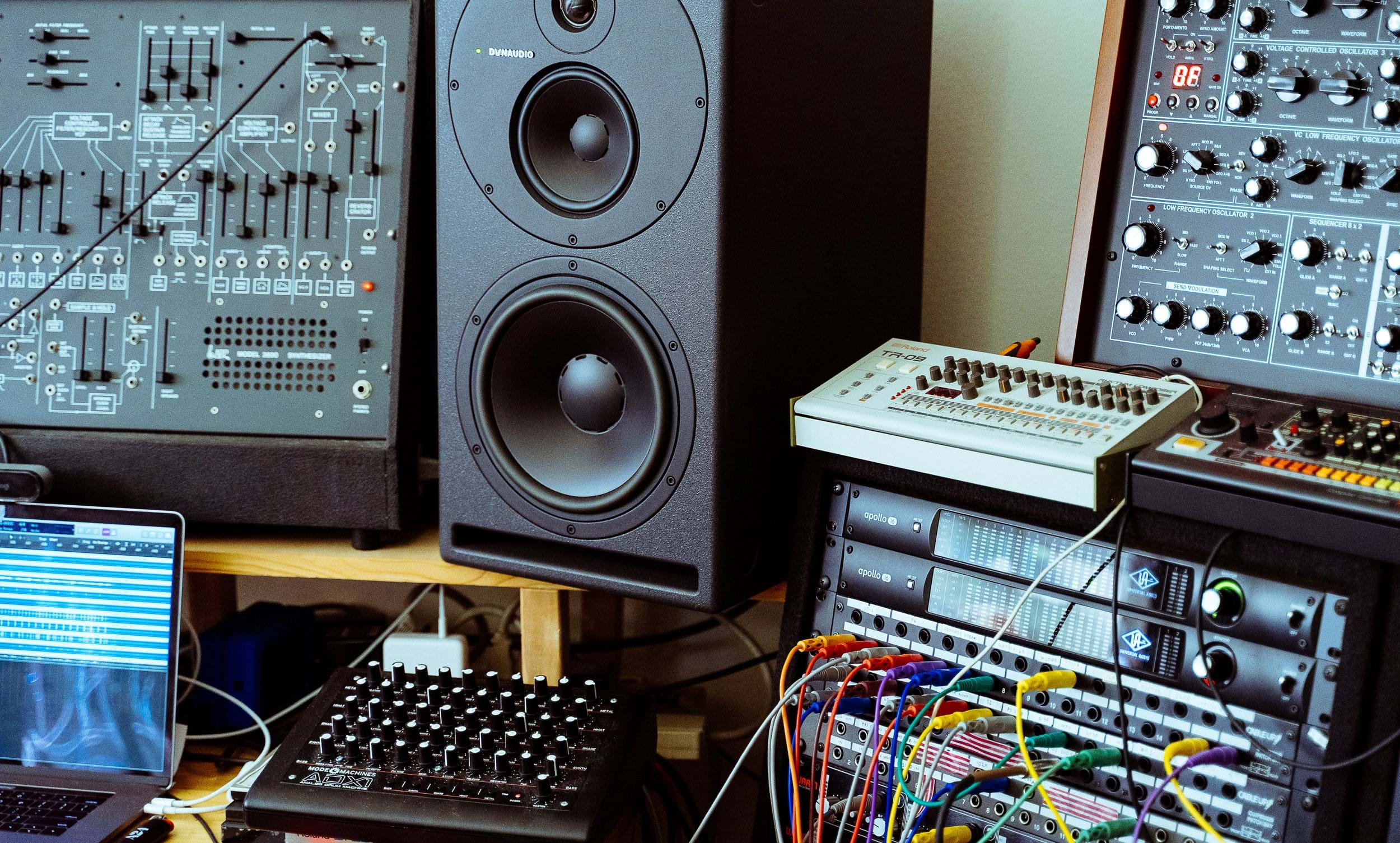
Finally, they also have near-identical studio monitor setups. As we said at the top, they use our Core and LYD speakers: Kyle has Core 59 monitors, while Michael went for Core 47s.
That could pose issues with other speakers – but we designed the Core range to be ultra-consistent, and the difference between the 59 and the 47 models is more about which model suits the room in question. It’s perfectly possible to exchange audio that was tracked and mixed on Core 59 and then keep working with that track on Core 47.
The LYD 5s and LYD 7s they used previously are now in Studio B. Yes, that’s right: they both have a Studio B in their homes as well. These facilities are mainly for their assistant – and, since he also has LYD 7 monitors in his studio at home, it makes perfect sense. It means Kyle and Michael can coherently review his mixes with the highest degree of translation.
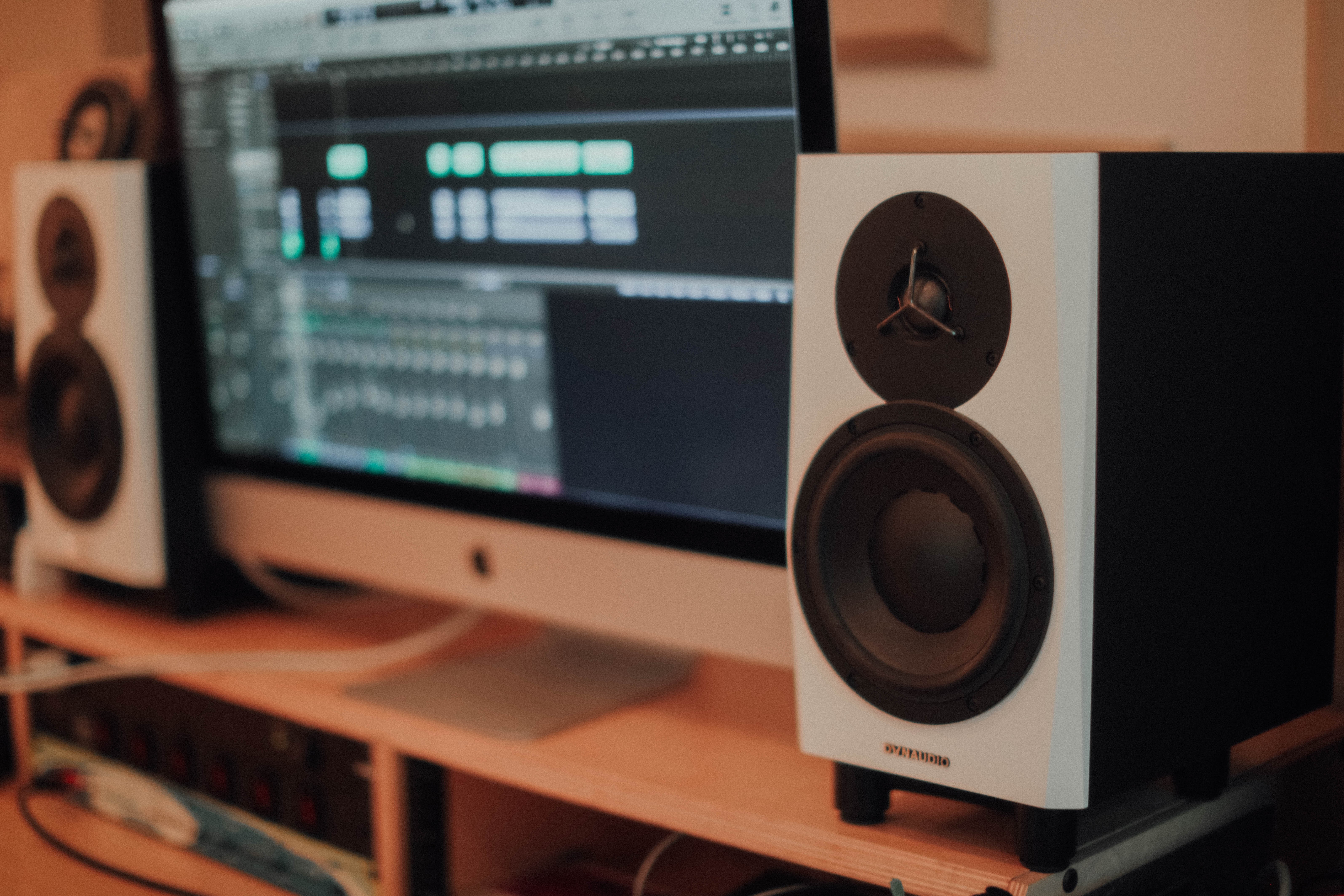
So so synthy
Now, the synths require a chapter of their own. While the guys do use a virtual synths every now and then, they estimate that 95 per cent of the time, the choice is an analogue beast.
When asked about their absolute favourite analogue synth, they fell silent… a tough question. But after a minute or two of internal debate, they concluded that they really, really, really like ARP synths – the 2600 and the Odyssey in particular.
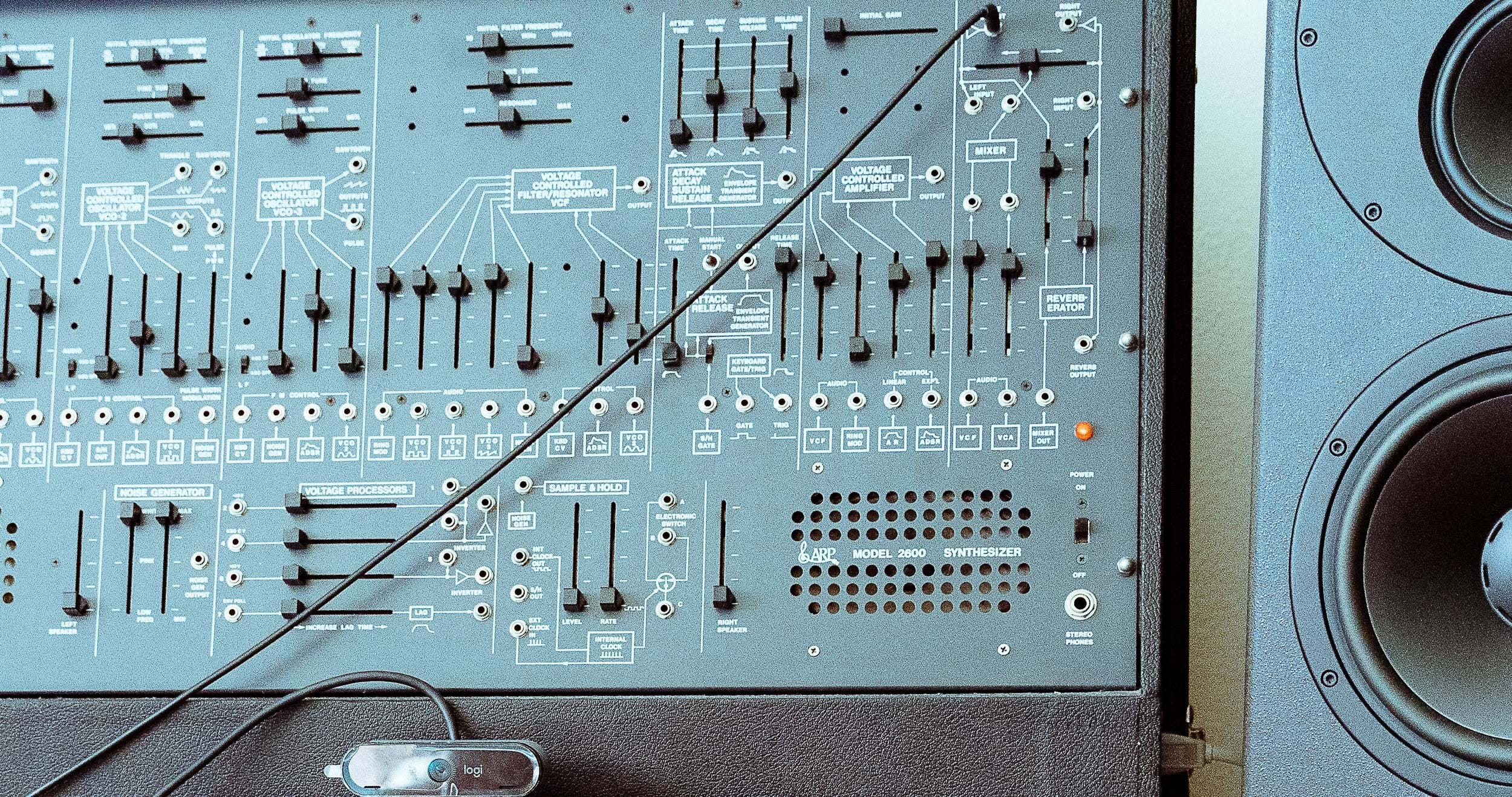
Between them, they have three original 2600s, two vintage Oddyseys, three vintage Soluses and an ARP Avatar guitar synth. Plus each has a desktop Odyssey and a full-size Odyssey. The last ones are the remakes, but they still reside in the analogue domain. So, which do they prefer?
“They both sound great, but the old ones probably sound a bit more aggressive and has that extra bite. Slightly more growly,” Michael says.

The old ones probably sound a bit more aggressive and has that extra bite. Slightly more growly.
Michael Stein,
Mixing in and out of the box
On the mixing side, the split is much more even between analogue and digital. Kyle estimates that they probably use plug-ins 60 per cent of the time, but also stresses that they have increased ‘mixing in the box’ massively since they got the Apollo interfaces with DSP-processors for running UAD (universal audio) plug-ins.
That said, they still love to run signals out to the analogue domain and crank a preamp or compressor for adding even more of those flavours coming from real valves, transistors and transformers working hard.
They also send tracked synths through a real spring-reverb unit from time to time, even though they also recognise that the UAD version of that effect also sounds pretty sweet.
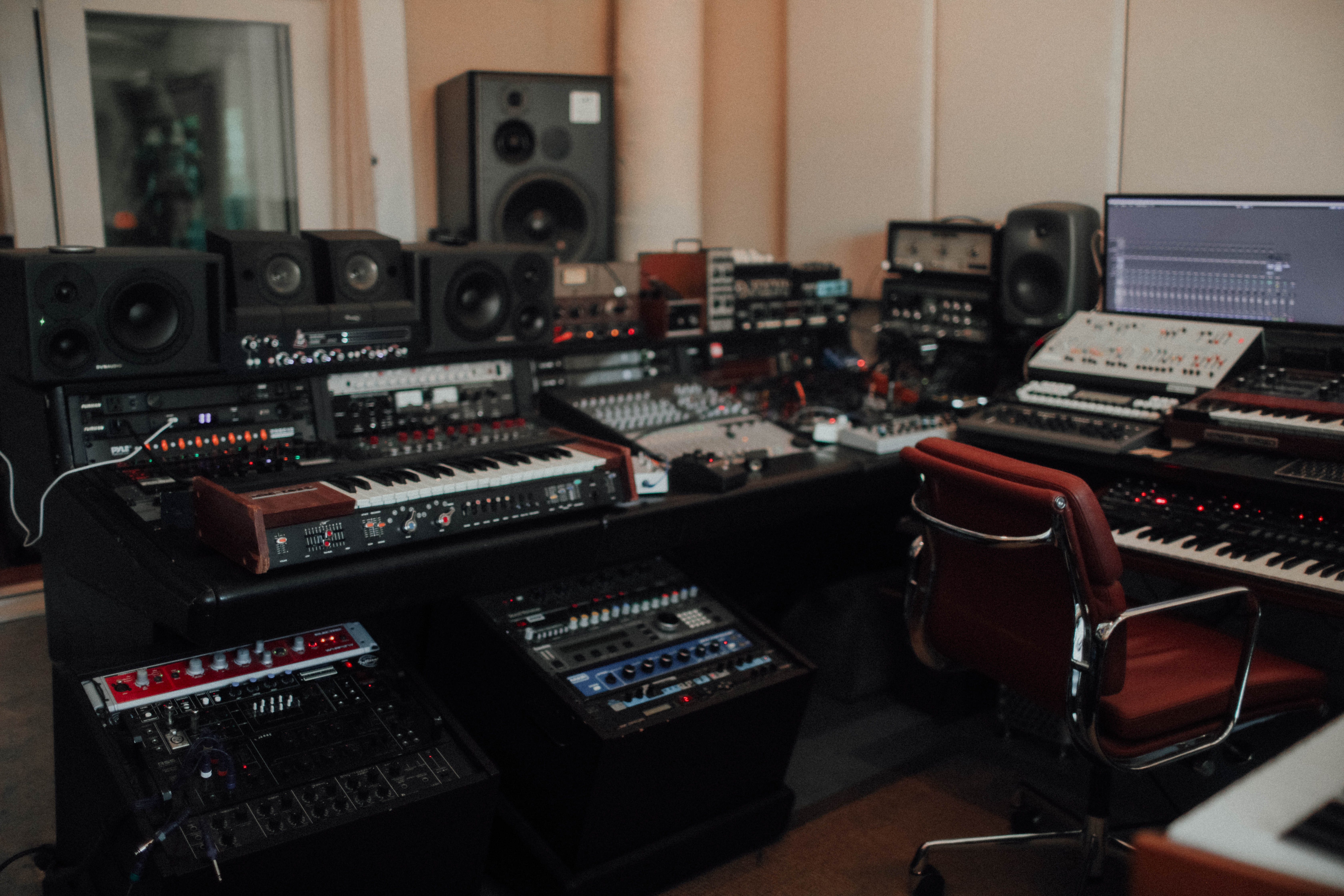
Deliveries and deadlines
How do they know when a track is done? In this case, the mixing part can’t be seen as one uniform process across the board, because it depends on whether it’s a project of their own or a production for someone else. If a track is for Michael and Kyle’s own band S U R V I V E, they can spend more time mixing and adjusting – but when working with a film-production team, there are deadlines. Strict ones.
“You know, it’s often a great thing to have a deadline that you just need to meet,” Kyle explains. “But it’s also important to note that there’s a big difference between delivering for a media production and making your own album. We don’t deliver a complete mix – a bounced stereo file – for a media production. We usually mix it like 80 per cent of the way, but the music has to blend in with dialogue and sound effects, which is being done during post-production. So, we deliver stems and not rendered stereo or surround tracks. The stems are not individual instrument tracks either, but more like categories of tracks such as synth-pads, leads, percussion, bass and so on.”
If you don’t have a deadline, Michael adds, you can just keep tweaking and tweaking, adjusting and refining forever. “Sometimes it actually helps to just leave it for a few weeks or a month, he says. “Then, when you open the project again and listen, you might simply decide that it’s done, or can immediately hear minor stuff that needs attention – and then it’s done. Listening with fresh ears, so to speak.”
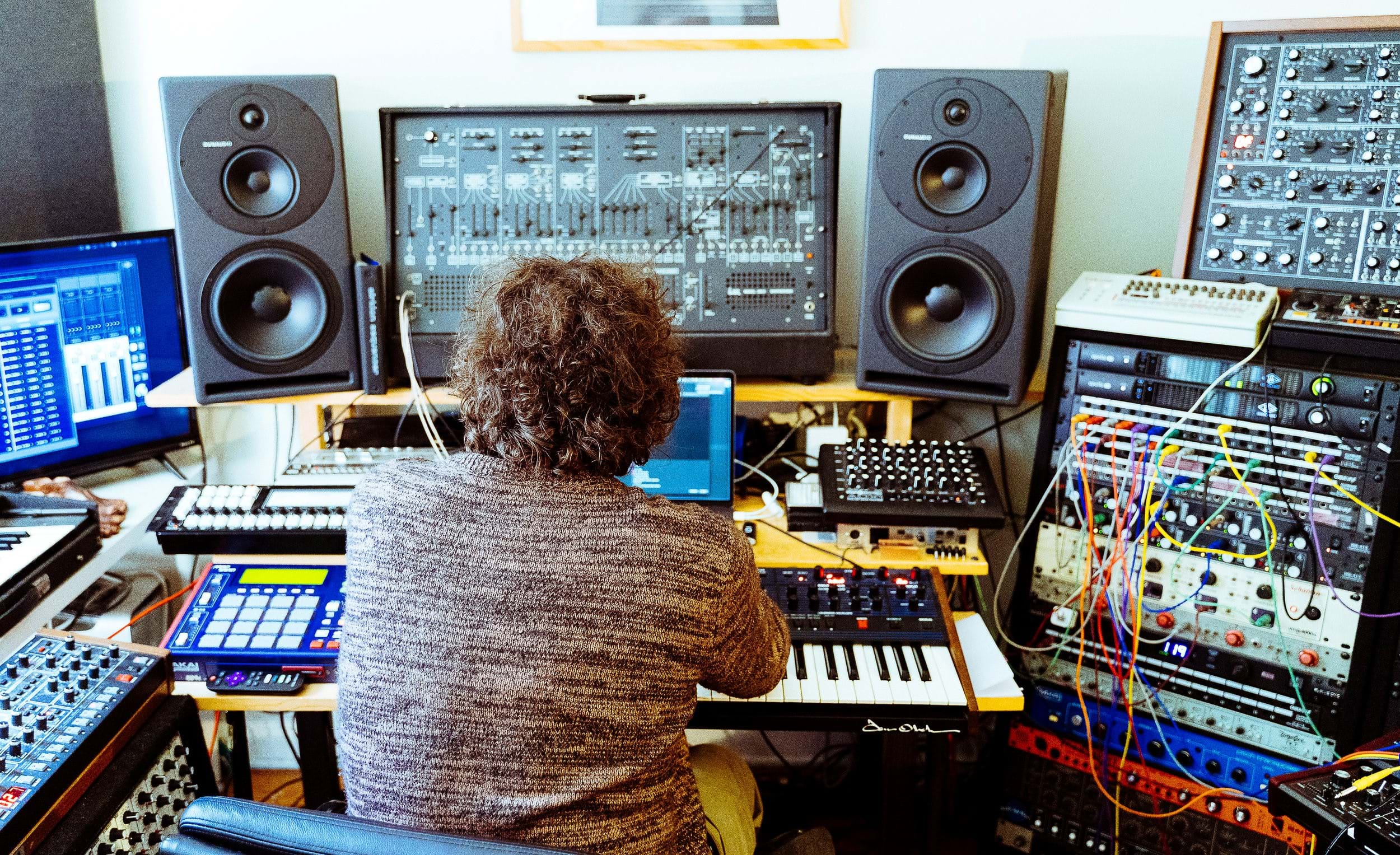
You know, often it's a great thing to have a deadline!
Kyle Dixon,
From LYD to Core
Speaking of fresh ears, we were obviously quite interested in learning more about the guys’ experience in moving from LYD to Core speakers.
“The first thing I noticed was that the imaging is a lot better. I could really hear where individual parts and instruments were sitting in the stereo field,” says Kyle.
“Also, it’s super important to our workflow that monitors are non-fatiguing. That they don’t hurt your ears and make you tired so quickly, and the Core speakers are really easy on the ears even in the wee hours.”
The first thing I noticed was the imaging. I could really hear where individual parts and instruments were sitting in the stereo field.
Kyle Dixon,
Michael agrees: “Yeah, and especially during long hours, the volume tends to go up during the day. So yes, non-fatiguing is absolutely key! I also find that there’s a better separation on the Core monitors. Technically, I guess it’s separation between lows, mids and highs, but on a more practical level, it’s really all about better instrument separation, which is also related to what Kyle talked about – placing the instruments in the stereo field.
“I mean, LYD is a very robust speaker and I just can’t believe how it can produce that massive sound without a sub, but it feels more like the sound is coming out of ‘one space’. With Core and the improved separation that I mentioned, you get a much clearer picture of the music and with so much detail.”

During long hours, the volume tends to go up during the day. Non-fatiguing is absolutely key!
Michael Stein,
Writing music for Stranger Things
Now that we have the gear framework in order, let’s dig into what it’s really like to work on a massive production such as Stranger Things, making music for the screen. Surely it must be somewhat different from making music for an album or radio…?
“Yes, absolutely,” Kyle says. “You still get to create music that you love, but it’s important always to keep in mind that the purpose of your writing is really to support someone else telling their story.
“It’s easy to become attached to a piece of music and end up really happy about the result, but for whatever reason the director or producer might feel that it’s just not right for what’s happening visually in that specific scene. You need to find a way to not let that get to you. Ultimately, you’re not working for yourself artistically. It doesn’t mean that you can’t be creative and do things in your own way, but just that you need to stay flexible and open to suggestions even if you think it’s perfect as it is.”
“You definitely still have a voice and get to be an artist,” Michael adds. “They didn’t hire you for the gig just because they knew you’d be technically capable of doing it. They hired you because they wanted your style and sound.”
Always keep in mind that the purpose of your writing is really to support someone else telling their story.
Kyle Dixon,
But it also appears that there are some benefits involved with being bound to work within someone else’s framework, as Kyle explains: “I’d say that with less ‘freedom’, you also have more of a starting point and a pre-determined direction.
“There are certain parameters and rules that you need to work within to tell the story in question, as opposed to starting with a completely blank piece of paper and just beginning to write – which could go in any direction. That, of course, can also be great, but we’ve found that the infamous ‘writer’s block’ is less of an issue when you know you’re writing to support a certain tone or vibe in a specific scene for a movie or TV show.”
Michael agrees: “In that sense it can make writing easier to achieve a goal and actually having a finished piece of music”.
We also wondered to which degree the guys had the actual footage with time-codes to write to. “I’d say 80 per cent of the time, we’re scoring to the picture. But we know the script in advance and can certainly start shaping ideas without having the footage – and then we can quickly make them fit when we do get it.”
You still have a voice and get to be an artist. They hired you because they wanted your style and sound.
Michael Stein,
The Demogorgon’s in the detail
How important it is to know the story, lines and characters in detail up front?
“It’s very important,” says Michael. “We always start a project with a number of meetings with the director or producer. And before any actual writing takes place, we also get the scripts so that we can get familiar with the story and – not least – the characters. That’s hugely important.
“There are always some ‘common’ scenes that you’d find in most movies or TV shows, and often the music to support them is somewhat similar. But to give it a unique vibe that suits these specific characters and their mood in this particular scene, you really need to know them in great detail. Once you do that, it’s so much easier to select the right sound palette and instrumentation for the scene and from then on the experimentation and truly creative process can begin.”
“At the end of the day,” Kyle adds, “these things combined – knowing the story and characters and knowing what sound you’re going for – will help you create music for a ‘common scene’ that sounds unique. That’s why meeting with the people behind the production, picking their brains and reading the scripts in advance is so paramount when writing for the screen.”
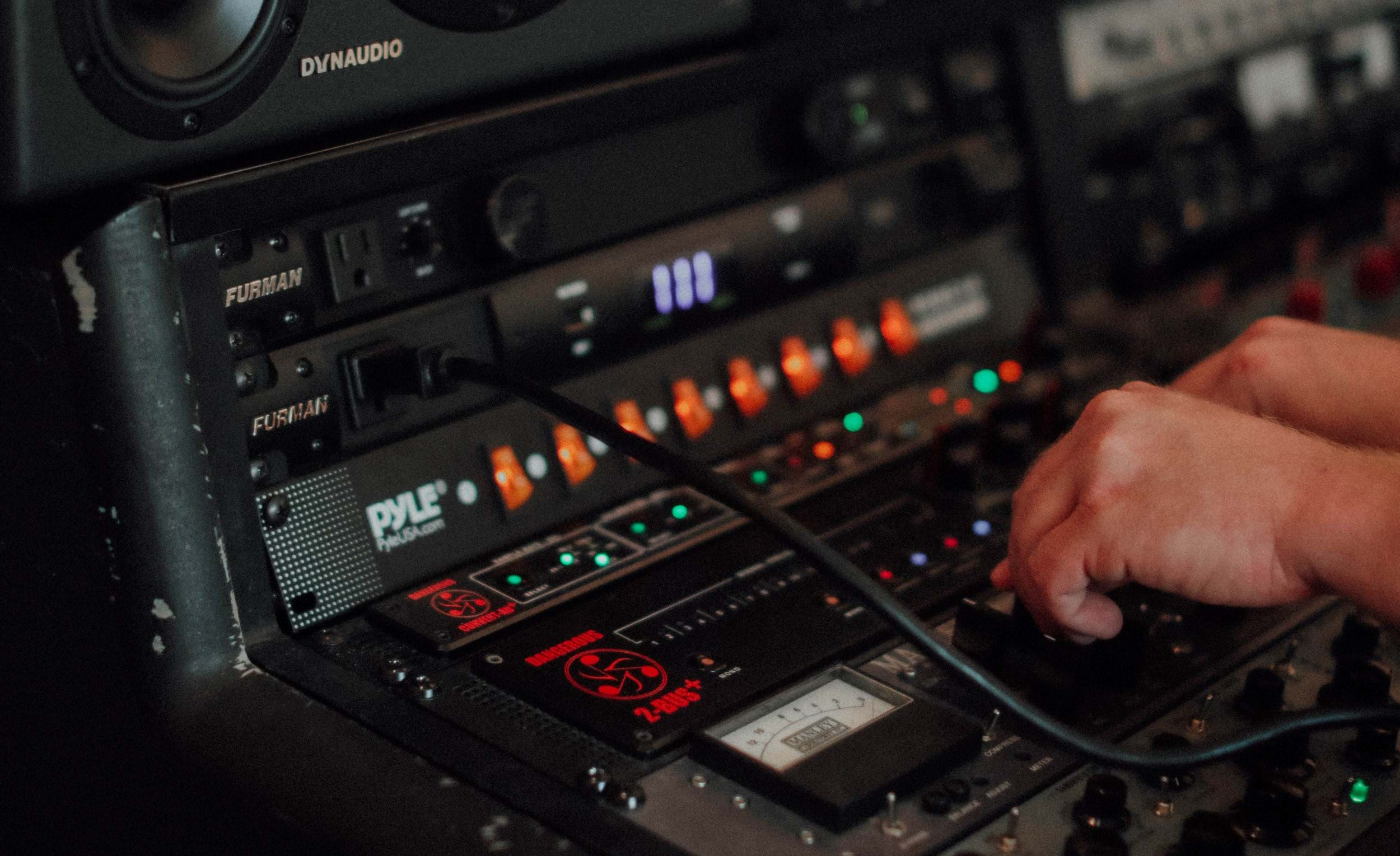
Quick composer tip that can save you a ton of time
“OK, so this happens from time to time,” Michael tells us. “One of us has this clear idea about how a certain sound or effect should be, and then you try to explain it to the other by emulating that sound vocally. For instance, something like: ‘swuushkawowishhhhhh’… Then we try to create that sound using one or more synths and lots of plug-ins. And we might get there eventually, but it takes time.
But sometimes early on in the process, the other simply says: “Why don’t we just record you making that sound?” Sure, we still add effects and you probably won’t recognise the sound as a human voice, but it often works, and it is so much faster!”
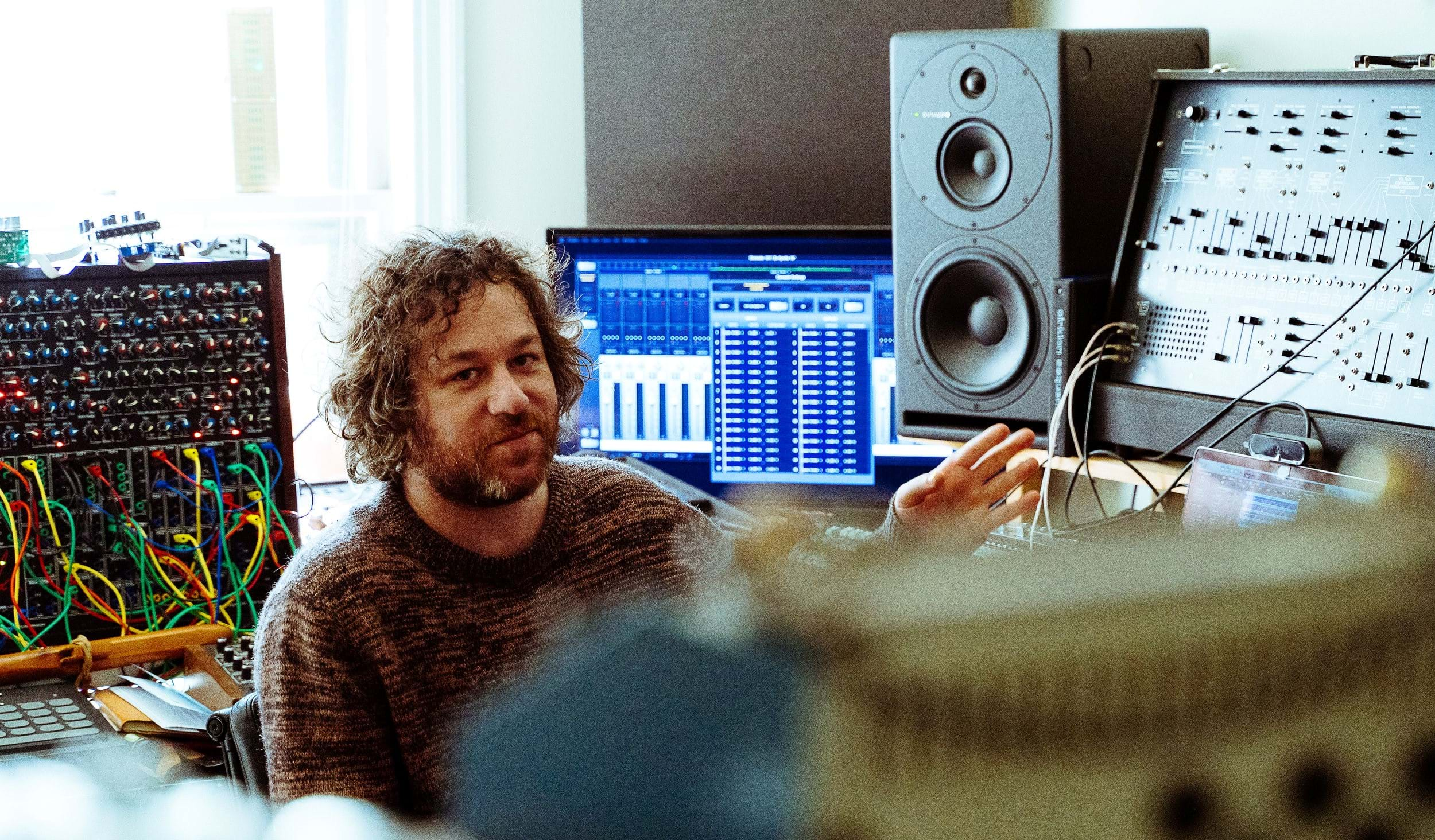
Why don’t we just record you making that sound!?
Michael Stein & Kyle Dixon,
Long-distance relationship
Even though Kyle and Michael live in different cities, that doesn’t mean that everything happens over Skype, Zoom, Dropbox or Google Drive. They do get together in the same studio at least once a month, and, when nearing critical deadlines, often every 10 days or less.
“I think we’re actually getting the best from both worlds,” Michael says. “When you work alone – and even from your own home – you get a lot of flexibility. If you’re not really inspired, you can do the dishes or run some errands and work at a later point. You can work late in the evening, during the night or in the early hours of morning. Whatever fits your flow the best.
“But sometimes it is also a benefit to have a fixed schedule that you have to follow – and when we get together, we want to make the most of the time, so in that case we do have a work schedule that we follow. It might have something to do with the fact that we often meet physically before critical deadlines, but anyway, I feel like we get to benefit from both scenarios, working together – sometimes in the same room and sometimes virtually.”

Advice for aspiring media production composers and producers
“Be persistent and patient. If you like your music, someone else out there is going to like it too – they might just not have found you yet,” says Kyle. “And always remember that you’re helping someone else tell their story. Don’t take it personally if what you find perfect just isn’t perfect for the story.“
If you like your music, someone else out there is going to like it too, they may just not have found you yet!
Kyle Dixon,
Michael adds: “And keep honing your skills. If you don’t feel inspired one day and don’t have a specific production deadline, go and learn something new. It doesn’t matter if it’s related to music theory or gear, such as learning how a compressor works with a kick or exploring a new synth parameter. Stuff like that.
“If you’re passionate and curious, you’ve got to keep developing your skills. Because when you do find yourself involved in a media production one day and the director or producer says: ‘I want something like this!’, then you’re better prepared – and chances are better that you will find a way to deliver exactly that."
That’s solid advice. Stick with your passion, hone your skills and be patient. Now, go make some noise!

Sign up to get more great articles
Nothing compares to the satisfaction of knowing – for a fact – that something is as good as it gets


